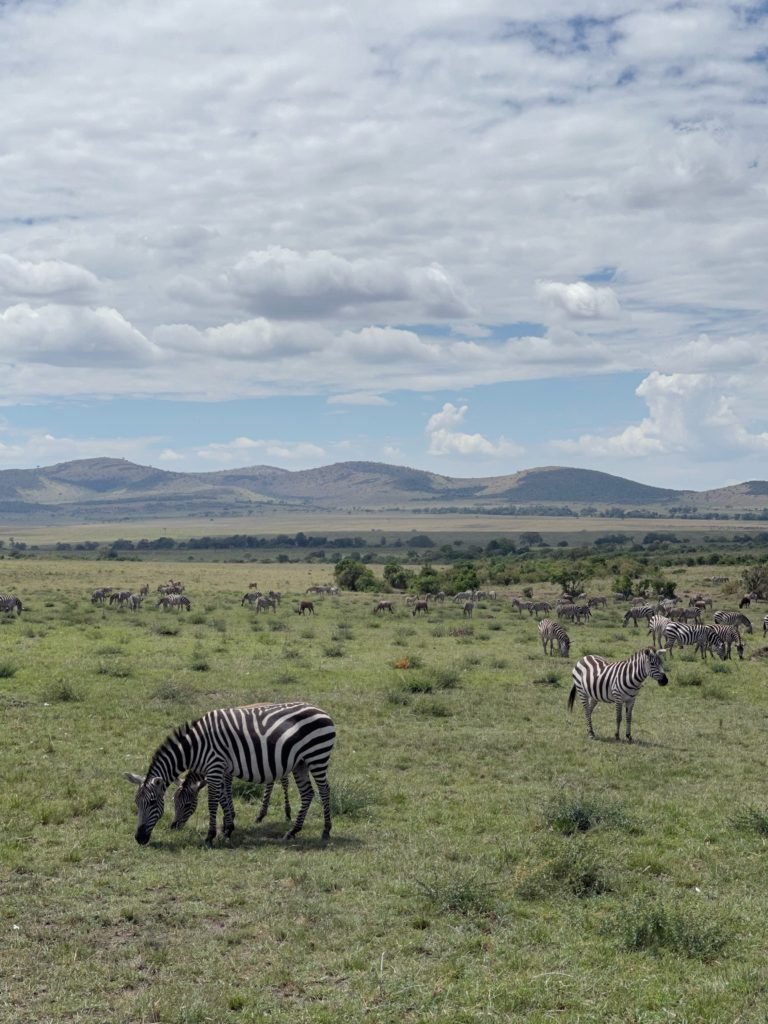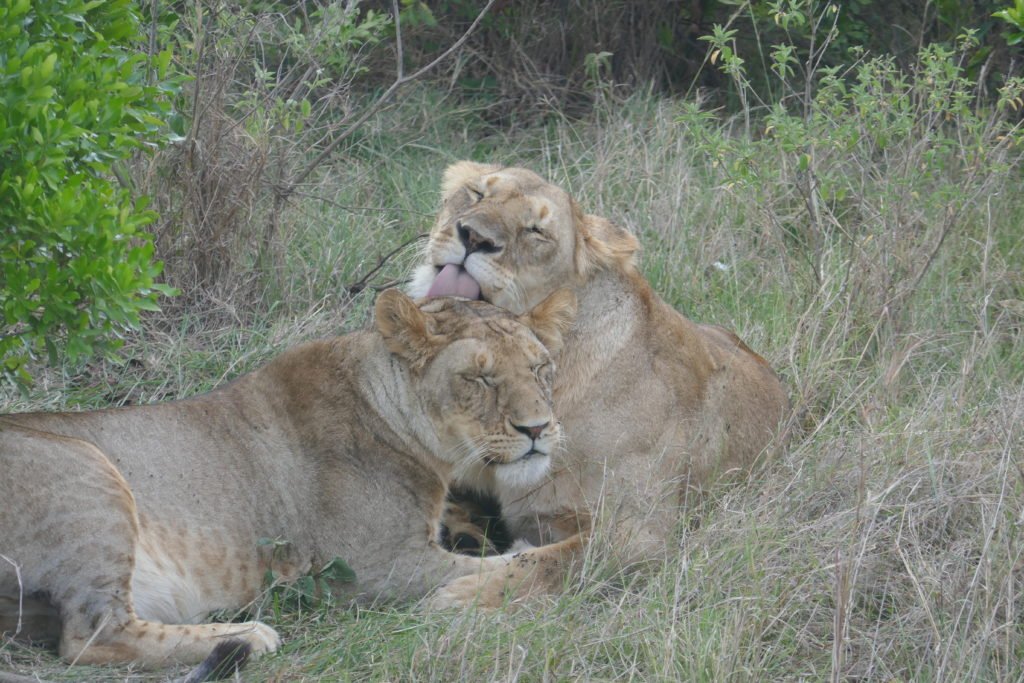Kenya
The omicron variant hit the news a week before we were to depart for Kenya. Anyone who knew of our upcoming trip reached out to ask whether we would still travel. I checked with our tour company, African Travel, and was told the trip was on, Kenya was open and safari staff were masked and vaccinated. So the day before our departure, we packed! It didn't take long since we were limited to a maximum of 33 lbs in a soft sided bag and almost every safari camp has laundry service. Many people won't even consider a safari if they have to limit their luggage which is unfortunate. I like to treat safari packing as a challenge to pack just the right amount, no more, no less.
This was an amazing trip full of sensory overload. Sounds, smells, tastes, experiences...it was often hard to fall asleep at night because I was trying to remember the various bits of wisdom our guides had told us that day. That, and the sounds outside our tent sometimes kept me awake. However, the generous sundowners (cocktail hour on safari) helped lull me to sleep.
Our flight from London didn't land in Nairobi until late at night so we got to our hotel, had a brief sleep and were ready to go early the next day for our flight to the airfield in Amboseli National Park.
The airport is close to the border of Tanzania and provided us with a clear view of Mt Kilimanjaro.
Ali was waiting for us at the airfield with hand sanitizer and cold drinks. He was our guide for our two days at Tortilis Camp Amboseli. He was a patient man with a quiet sense of humor and an amazing knowledge of animals, birds and plants in Amboseli National Park.
Tortilis Camp was a perfect start to our Kenyan safari. The camp is located in a private conservancy next to the National Park, with the bar and dining area looking out over the vast expanse of land and Mt Kilimanjaro.
Amboseli is known for their magnificent elephants and they did not disappoint!
We also saw some amazing birds at Amboseli, the fun-looking crown cranes and an ostrich family with a flock of new babies.
Many safari camps provide guests with the opportunity to visit a local village. We welcomed the chance to see a glimpse of life in a traditional Maasai village. We were asked to mask in the village and were greeted by the village singing and dancing to welcome us.
Dipai is a 31 year old Maasai with two wives and five children. He is educated and serves as a spokesperson for the community of 102 residents when visitors come to the village. Naturally, covid was on our minds and we were curious about the experience for this village. Dipai explained that the Maasai are nomadic and influenced by the needs of their sheep and cattle. Strict gender roles exist. The village has no electricity or running water and most health care needs are met by a medicine man. And yet, despite having no recorded cases of covid in their village, when the Ministry of Health offered them vaccines, every single villager was vaccinated in one day.
From Amboseli we traveled to Elewana Lewa Safari Camp in the Lewa Wildlife Conservancy near Mt Kenya. Here we were fortunate to see elephants, rhinos, lions, zebras and a cheetah. Our guide Daniel knew just were to look to find them.
We also enjoyed delicious meals while at Lewa Safari Camp, breakfast in the bush, lunch poolside and dinner & drinks by a cozy fire.
Our final camp was Sand River Masai Mara in the Masai Mara National Reserve, close to the Tanzanian border. The Masai Mara ecosystem is home to one of the highest lion densities in the world and is also where over two million wildebeest, zebra and Thompson gazelle migrate annually. We were not there for migration, but did observe thousands of zebras heading south to the Serengeti for water.
Sayela was our guide at Sand River. He recognized that it was difficult for guests to pronounce his Swahili name so he said to call him Daniel. He was a Maasai who did not go to school but had an incredible knowledge of the animals in the reserve. He was like a lion whisperer and knew which pride a lion was from and where was the best place to find them.
Our first afternoon in the Maasai Mara was raining and he drove us straight to a large rock where we were fortunate to watch the Black Rock pride cubs playing in the rain.
Early the next morning, we came upon the Sand River pride lying in the grass, getting ready for their day.
Later in the afternoon we watched a large male lion. There was a female nearby, totally ignoring him, at least to our untrained eyes. Our guide said quietly "get your cameras, they are going to mate." And sure enough, the male stood up, the female stood up, they mated and lay back down. The whole encounter took about 30 seconds.
Though the lions were a highlight, we were also fortunate to see a leopard and a cheetah while in the Masai Mara. The leopard was walking along some low brush by the river, making him hard to see. The cheetah was sitting in the middle of an open field, in plain view, very alert but ignoring the jeep.
There are always elephants and I never tire of watching them. They are highly intelligent, very family oriented and fiercely protective of their young.
As we finished our game drive on the last night, Daniel turned a corner and we arrived at a beautiful setting overlooking the sunset. A fire was roaring, Kenya blankets draped over the chairs, warm water to wash our hands, a loo with a view tucked behind a bush and Maurice from the camp had a bar set up and was ready for our order!
This was an extraordinary week in Kenya. The animals are always amazing and the experience is so fascinating with a knowledgeable guide sharing information about their habits and behaviours. Then on top of all that, you stay in the incredibly comfortable camps with delicious food and drinks, and they even do your laundry! This was my third safari and I would go again in a heartbeat!





































